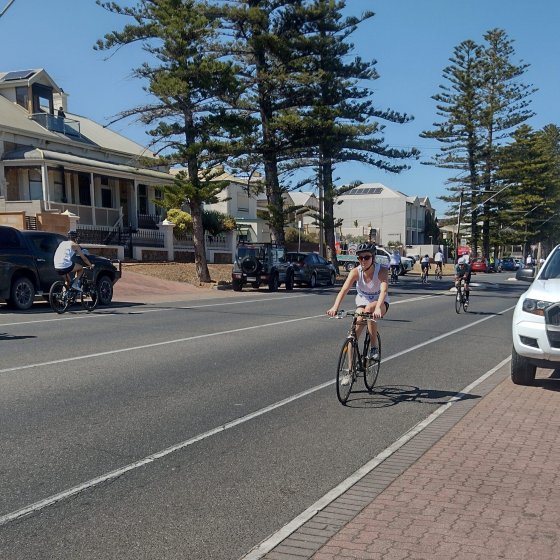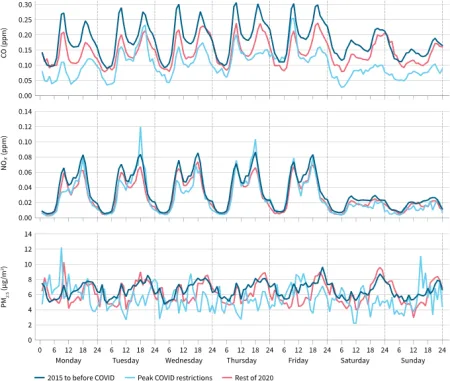Transport
South Australia is very car-dependent for travel, with approximately 85% of people using cars as their primary mode of commuting, according to the Australian Bureau of Statistics. Pollutants from vehicles powered by internal combustion engines (ICE) include carbon monoxide, nitrogen oxides, particulate matter and volatile organic compounds. Our growing population and related increase in ICE vehicles can potentially worsen Adelaide’s air quality over time unless there is a shift in transport use.
An Australian Motor Vehicle Emission Inventory for the National Pollutant Inventory was undertaken in 2014. This report states that the human exposure from motor vehicle emissions is likely to be substantially greater than equivalent emission levels from industrial sources. This is due to vehicle emissions being released close to ground levels and usually where people live and work. In contrast, industrial emissions are typically emitted through vents and stacks and are, therefore, dispersed before they reach the population. Therefore, relatively minor levels of motor vehicle emissions can lead to significant exposure to pollutants and associated health impacts. The extent of emissions did differ for some pollutants between motor vehicles and industry.
To reduce traffic emissions, the South Australian Government has introduced incentives for the purchase of new battery electric or hydrogen fuel cell vehicles that include a $3,000 subsidy and a three-year registration exemption for vehicles first registered from 28 October 2021. There have been 7,000 subsidies made available and, as of November 2023, 5,000 subsidies still remain.
Expanding participation in active transport and use of public transport is required to remove South Australia’s reliance on cars. In 2022, a select committee of the Legislative Council was established to report on Public and Active Transport in South Australia in response to concerns about the decline of public transport services in metropolitan Adelaide and lack of accessible public transport in regional areas and developments located on the city fringe. The committee has made 13 recommendations to facilitate and improve public and active transport.
COVID-19 and Transport Emissions
On 12 March 2020, the South Australian Government implemented lockdown measures until the end of April 2020. The measures were expected to reduce air pollution due to decreased non-commercial vehicle traffic and decreased industrial and commercial activity. The average reduction in traffic volume was 40% during the peak of the restrictions before returning to near-normal levels at the end of July 2020.
In the Adelaide CBD, levels of CO decreased by 40% in accordance with the traffic volumes, compared with measurements taken during the same period (March–April) in the 5 years before the COVID-19 lockdowns. Evidence of decreases in NOx and PM2.5 was harder to observe.
Five years of data were used for the pre-pandemic period to reduce the influence that large-scale events, such as bushfires and land burns, can have on estimates of ambient pollutant concentrations. This resulted in a small reduction in NOx levels. PM2.5 levels continued to be influenced by bushfire smoke in the early part of 2020 and remained very similar to past averages. Overall, an improvement in air quality was recorded, with 20–40% reduction in all pollutants during March and April 2020.

